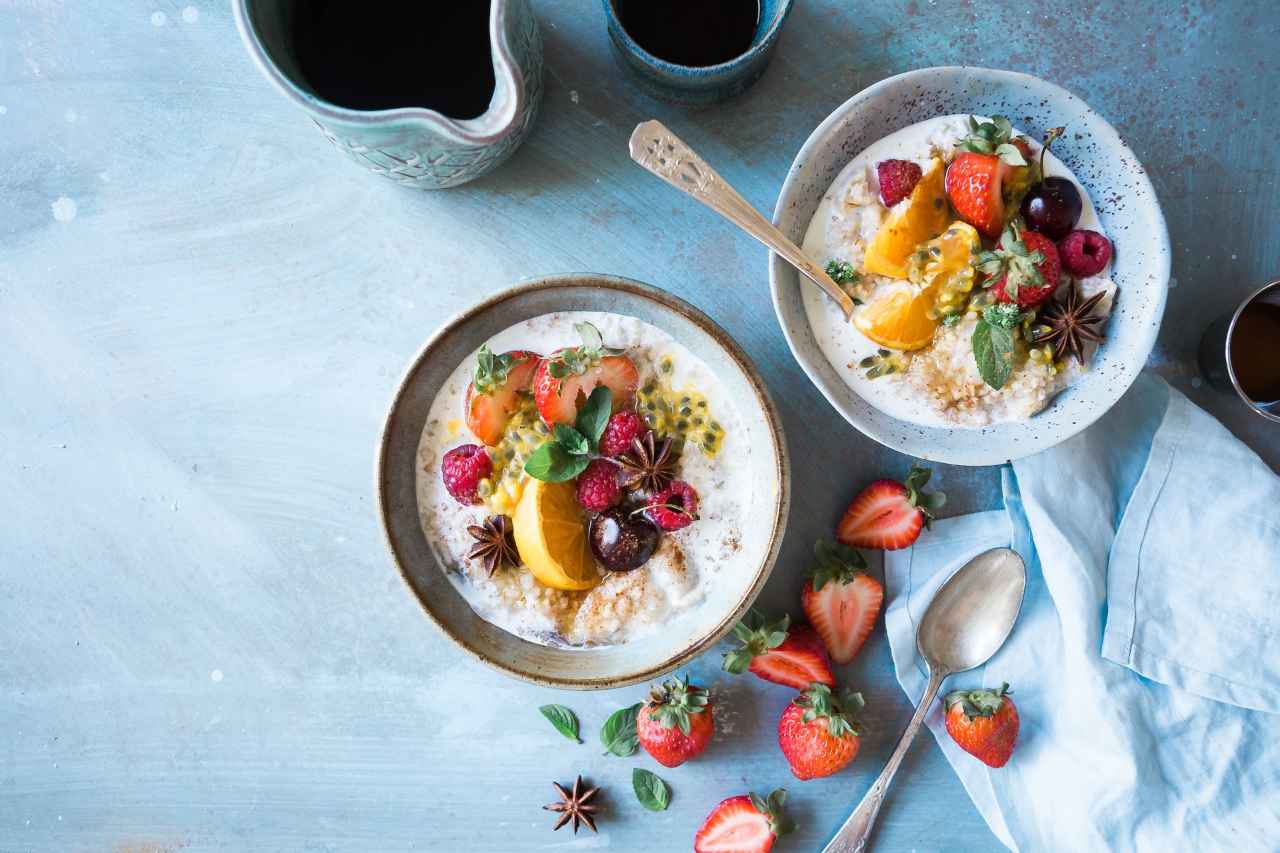Get In Touch
Info@fitfaysal.com

Building a healthy eating habit is way easier said than done.
I mean if it was that easy, we’d all be rocking our dream bodies, or at least, be at healthy weights, right?
There are 100’s of tips out there, each varying with different perspectives, some telling you to cut this food or that food out, some telling you to “Embrace every food”.
These are personal views, and everyone is different, everyone’s way of ‘eating healthy’ will be unique.
Before you jump into this journey, you should ask yourself ‘Why?’ Why do you want to eat healthy?
And that answer should be strong enough to keep you going at the early stages.
In this article I cover some tips for building healthy eating habits, pick the tips that suit you, and add your touch of uniqueness without straying far from the core fundamentals.
I’ll give you 1 important tip here- “Start slow”, Habits take time to build.
The tips under this section are general- meaning for everyone, and important.
They are also a great starting point for anyone who wants to take building healthy eating habits seriously.

Most of us decide to start eating healthy for a “diet”, a limited time to achieve a desired goal before we then revert to our old eating habits.
But here’s the sad part, when you go back, you get your old results back.
If you truly want to start eating healthy and maintain the results you work hard for, accept this fact.
Side note: We’re all human after all, you probably won’t build these healthy habits on your first try.
So, try to at least use the tips for your diet and when you see how well they work, make a lifestyle change.
In modern times, food is no longer something we eat when we get hungry, for many, it’s become a coping mechanism.
We just throw things in our mouths when we get bored, feel sad, or “Because the food is in front of us”.
Food is for sustenance and to get nutrients for your body. Understanding this point can help you build a good relationship with food and know how nutrients in foods affect your body.
The things we do day-to-day also affect how we interact with food. If you move around a lot, you either don’t get to eat much or you eat mostly takeout.
If you mostly eat with others, you’re probably more influenced by what others eat. When you’re home more often, you probably eat more because the food is within arm’s reach.
Consider this point when making your meal plan and choose the tips that align with your lifestyle.
Think about it, every habit that you have now is a result of you doing that same thing over and over again, from things like brushing your teeth to driving a car.
The more you do it, the better you get, and the better you get, the easier it is to keep doing it.
So, we shouldn’t expect building new healthy eating habits to be any different.
A great book for building habits: Atomic Habits by James Clear.

Understanding how many calories are in the foods you eat can enlighten you on how much or how little you eat.
Knowing the right foods for specific nutrients changes the perspective from “boring veggies and fruits” to nutrient bombs.
Sounds more inviting now, right? This might be the encouragement you need to eat more healthy foods.
The tips outlined here are tips you can pick and choose from to add to your various individual lifestyles.
Get ready to improve your eating habits!
Being more present and mindful when eating can be a game-changer. When we multitask and eat too fast, we don’t pay attention to our body’s response to foods.
When it’s time to eat, focus on just your food and eat slower. While doing this, you may start to realize that you don’t need to eat as much to feel full.
Just because you “Feel” hungry doesn’t necessarily mean you are hungry.
Sometimes you feel hungry for emotional reasons, sometimes it’s just for a short phase, and sometimes you probably just need to drink water.
So, try to eat mostly when you feel really hungry. Likewise, watch out for fullness signals by eating slower, focused, and controlled.
Next time you go out shopping for your favorite ingredients or snacks, check the back label for calorie and nutrient contents.
You may either get a pleasant feeling if they’re healthy ‘Enough’, or your jaw dropped at how many calories they contain, the latter is usually the case.
We’d all lose or maintain weight if we simply ate more veggies, and reduced the high-carb foods, but once again, it’s not that easy.
Vegetables are good for you because they usually contain way fewer calories and are nutrient-dense.
Pick the ones you can tolerate, reduce the rice, and go twice on the veggies.
Couldn’t find a veggie that rhymes with rice 🙁
Whenever you stumble upon meal plans online, your goal should be to pick some foods out of that plan and add them to your plan, instead of trying to follow someone else’s.
Except it’s been personalized for you, this usually leads to quitting. So, chose healthy meals that taste good, and ensure it contains the proper macronutrient ratio of 50% carbs, 30% protein, and 20% fats.
Depending on your goal, whether it’s to gain or lose weight, or build muscle, these numbers will differ.
The topic of building healthy eating habits makes us think about “Removing” certain foods.
Instead, let’s be positive and focus on adding more variety of foods. This keeps it interesting, making it more sustainable.
To elaborate on the previous point, people tell you to remove junk, sugary drinks, and foods they deem unhealthy.
And although, ideally it would be great if we could stop eating them entirely, we usually can’t. You just end up despising the lifestyle.
Focus on limiting these foods and have them once in a while.
If you keep junk food around, all you’re going to eat is just that. If you pass by the same block of restaurants on your way home, you’re going to crave the food there.
It’s so much easier to eat healthy when the unhealthy foods aren’t there.
So, rearrange your environment to fit your new lifestyle, stop buying those potato chips, stop filling your pantry with cookies, and if you can, follow a route with less crave-inducing restaurants.
“Out of sight, out of …what?” complete it.
Yes, fats are evil, but not all. Healthy fats from foods like avocados, olive oil, and nuts are good for you.
Add them to your meals to make them more balanced.
Fiber-rich foods are a great addition to a healthy diet. These carbs take way longer to digest, leaving you feeling fuller for longer.
That’s a great benefit to most diets, except for people trying to gain weight.
Foods high in protein are necessary for maintaining a healthy body. They offer the essential amino acids needed for muscular growth, tissue repair, and overall vitality.
Adding sources of lean protein into your meals not only helps you feel full and satisfied but also supports weight management by boosting metabolism.
Here are some great options:
Keeping an eye on your sugar and saturated fat intake is crucial for building healthy eating habits.
Excess sugar can lead to various health issues, including weight gain and diabetes, while too much saturated fat can raise cholesterol levels and the risk of heart disease.
Some sources of saturated fats are:
Excessive salt intake can contribute to high blood pressure and heart problems.
Reducing the overall salt content in your meals is a great step towards healthy living.
Staying properly hydrated during the day comes with an array of benefits, but in this post, I’ll focus on one.
Take sips of water while eating, after every 3-4 bites. This helps you feel fuller quicker on less food.
When you fill up a smaller plate with food, it tricks your brain into thinking that you’re eating more food, thereby sending those getting the feeling of fullness on lower calories.
Tracking your calorie and nutrient intake is a great way to stay conscious of what you’re eating, make healthier choices, and achieve set goals.
However, I wouldn’t suggest making this a lifestyle change. Rather, just for short-term goals.
Planning meals ahead of time takes you steps ahead of your goals. You spend less time thinking of what to eat while also reducing binge eating.
Take some time out of the week, write down the meals you want to eat and stick to it.
When we think of healthy eating, we imagine a small plate of bland rice and a pile of green veggies.
But that’s pretty depressing and unsustainable, to say the least.
You can add more color and flavor, cut fruits and veggies in different shapes, and even arrange the foods on your plate in a visually pleasing way.
There you have it! 23 tips for building healthy eating habits.
Building healthy eating habits is a personalized journey that involves adopting mindful and sustainable practices.
It’s not about restrictive diets but making informed choices that align with your health goals.
Try a few of these tips one at a time as too much change at once cannot stick. Stay healthy!